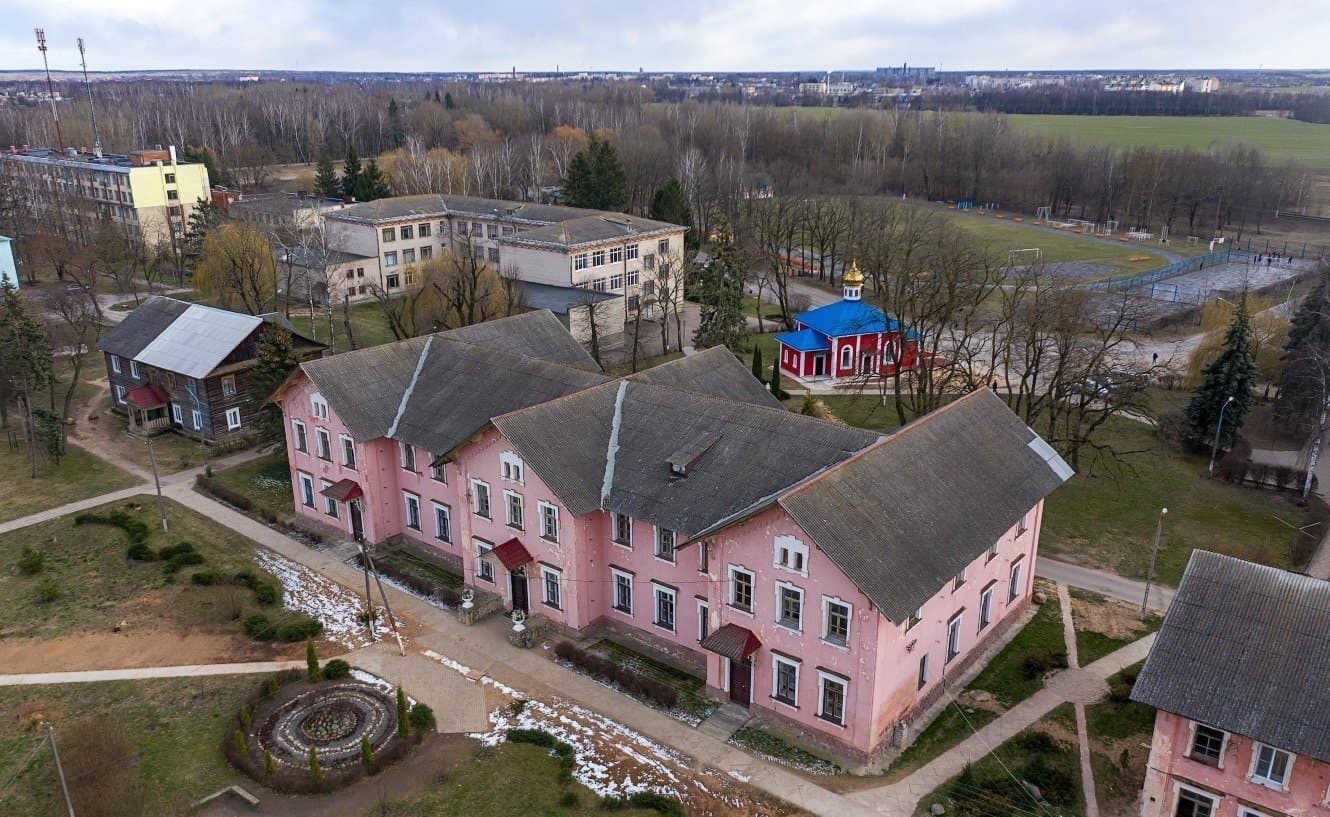Maryino. The former building of the agricultural school.
Landmark
Belarus, Minsk region, Pukhovichi district, Maryino village, Rudovich str., 8.
Description
The former building of the agricultural school is located in the southern part of the village of Maryino. Erected in 1876, the building demonstrates architectural elements of the Art Nouveau style and still serves educational purposes.
Categories
Historical
Architectural monument
Comments
Reviews to the Place
1Ольга Ерёменко
10.07.2025
The former building of the agricultural school in Maryino.
In 1863, the lands around Maryino were transferred to the administration of Interior Minister Lev Makov. Together with priest Thomas Rusetsky, he initiated the creation of an agricultural school because of Russia's need for qualified farmers and artisans.
In 1873, the construction of the Church of the Assumption of the Virgin Mary began with public funds, and the remaining funds were used to establish a school. In 1876, Alexander II approved a decree on the opening of a school for the training of specialists in the field of agriculture.
In 1877, the foundation of two two-storey buildings was laid. The first enrollment of 28 students took place in 1880. They accepted boys aged 14-15 who could read, write and count. The training course lasted 4 years. The first manager was Fyodor Gubin, who organized an experimental field, apiary and farm, introduced crop rotation and new farming methods.
In 1905-1906, the school became a center for the dissemination of revolutionary ideas. The students held meetings and called on the peasants to disobey, for which some were expelled.
In 1911, the school was transformed into an agricultural college, where they began teaching law, economics and accounting. By 1917, more than a thousand specialists had been trained.
During the Great Patriotic War, the college became a center of resistance. Students and teachers joined guerrilla groups and formed underground groups. For example, Ekaterina Kruglik, a 1941 graduate, organized sabotage and supplied food to the partisans.
In 1944, the college resumed its work, admitting 137 students. Local residents helped with the restoration. In 1946, the department of beekeeping was opened, and in 1949, the correspondence department of agronomy was opened.
In 1970, the college became a state farm college, and in 1976 it was awarded the Order of the Badge of Honor.
In 2001, the college received a Certificate of Honor from the National Assembly of the Republic of Belarus for its contribution to staff training. Since 2004, it has been named the Maryinogorsk State Order of the Badge of Honor of the Vladimir Lobanok Agricultural and Technical College.
Over the entire period, the college has trained more than 30,000 specialists.

